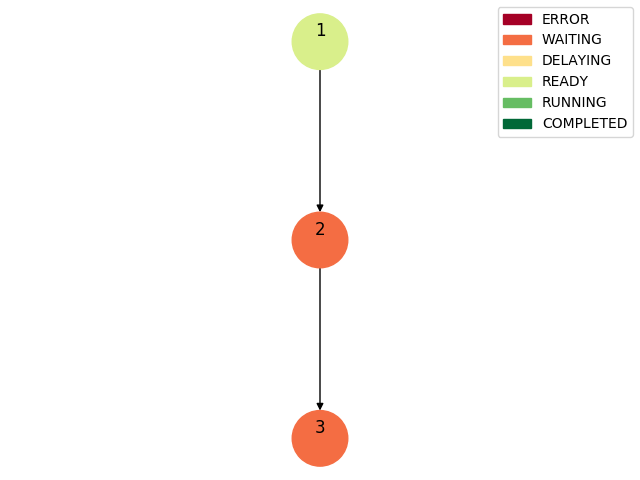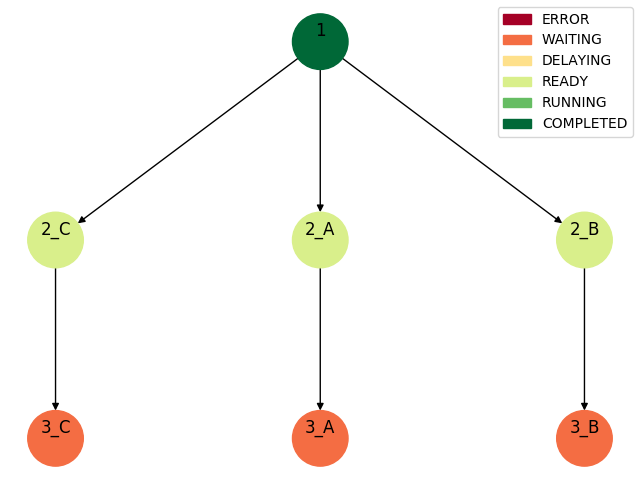Example 3: A workflow with scatter and follow
Workflow definition#
{ "workflow_id": "example3", "config": {}, "tasks": [ { "id": "1", "execution_configurations" : [ { "function_def_id" : "firstFunc", "priority" : 1 } ], "successors": [ "2" ], "properties": { "position": "start" } }, { "id": "2", "execution_configurations" : [ { "function_def_id" : "multFunc", "priority" : 1 } ], "successors": [ "3" ], "properties": { "scatter": "predecessor_outputs['1']['tile']" } }, { "id": "3", "execution_configurations" : [ { "function_def_id" : "otherFunc", "priority" : 1 } ], "successors": [], "properties": { "follow": "2" } } ]}
If the function firstFunc generates the same output as the examle above, and task 2 is expanded in the same manner:
Then task 3 will be expanded to tasks 3_A, 3_B, 3_C, each of which becomes a successor of one of the tasks expanded from task 2:
DAG representation#
Task 2 is a scatter task:
 Upon expansion of task 2, task 3 is expanded into 3 tasks: 3_A, 3_B and 3_C.
Upon expansion of task 2, task 3 is expanded into 3 tasks: 3_A, 3_B and 3_C.
